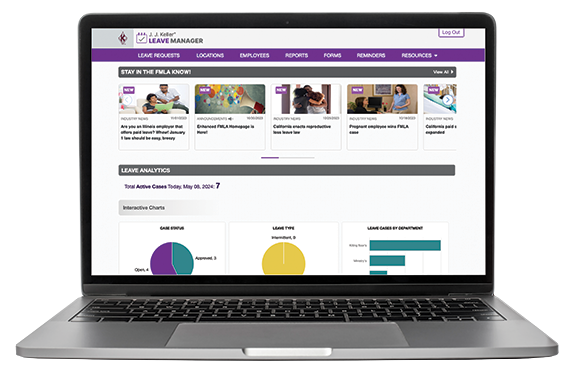Key to remember:
Congress members introduce bipartisan bill for paid leave
Not your average paid leave bill
Don't expect Congress to pass a traditional one-size-fits-all federal paid leave law anytime soon. A bipartisan group of House lawmakers, however, introduced a bill on April 30 aimed at taking a different approach to expanding paid family leave. The bill would, in part, establish a three-year pilot grant program within the U.S. Department of Labor to encourage states to establish paid family leave programs using public-private partnerships.
Having more state leave laws might sound like intensifying an existing nightmare, but the bill offers coordination tools to reduce inconsistencies among state leave laws, making compliance for multi-state employers easier.
The legislation has two parts:
1. The Paid Family Leave Public Partnerships Act
This part of the package would provide competitive grants to states that establish paid family leave programs through partnerships with private entities, such as insurance companies. Therefore, for example, the government would fund the leave benefit, but a private partner, instead of employers, would administer it. To qualify, states must offer:
- At least six weeks of paid leave for birth or adoption.
- Wage replacement between 50 and 67 percent based on income, with a maximum benefit amount equal to 150 percent of the state's average weekly wage.
- A public-private partnership model, such as those used in New Hampshire and Colorado.
- Participation in the Interstate Paid Leave Action Network (I-PLAN) for harmonization across states.
2. The Interstate Paid Leave Action Network Act (I-PLAN-Act)
This part creates a national framework to help states coordinate benefits, share data, and reduce confusion for employers with employees in multiple states. The I-PLAN Act would:
- Develop best practices from existing state programs.
- Help states coordinate policies and resolve conflicts.
- Support the creation of an electronic communication system to promote integrity, efficiency, and accessibility.
Under the I-PLAN Act, states would coordinate definitions such as:
- Intermittent and reduced schedule leaves,
- Family members,
- Employee eligibility qualifications,
- Employee coverage requirements, and
- Waiting periods.
The measure would also create a single method for state programs to process claims for employees who have worked in multiple states, so a single state program can provide the benefits.
Currently, 13 states and the District of Columbia have paid family leave programs, while Hawaii has paid disability leave. Three other states have voluntary programs to allow workers and employers to purchase private family or medical leave insurance.
The bill is in the first stages of the legislation process, so it has a long way to go. Given its bipartisan support and awareness of party leaders and the White House, however, innovative paid leave might be in our future.
Bipartisan House members introduced a measure that could signal a change in how employers deal with states’ paid leave laws.
This article was written by Darlene M. Clabault, SHRM-CP, PHR, CLMS, of J. J. Keller & Associates, Inc. The content of these news items, in whole or in part, MAY NOT be copied into any other uses without consulting the originator of the content.

The J. J. Keller LEAVE MANAGER service is your business resource for tracking employee leave and ensuring compliance with the latest Federal and State FMLA and leave requirements.